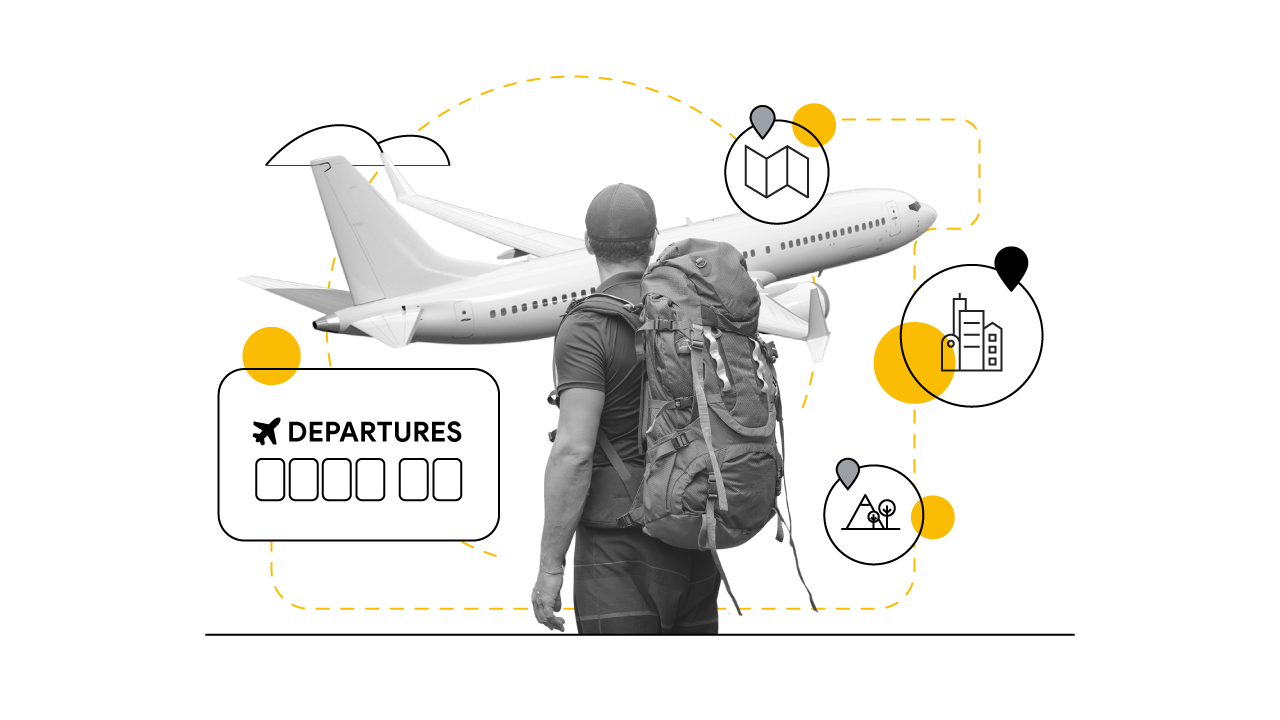Resolution #1: Paint a comprehensive picture of your user’s journey via intelligent data use.
Resolution #2: Strive for a fast and frictionless pathway for users to engage with your brand.
Resolution #3: Use automation to help tailor your messages to high-value users.
The new year is the perfect time for reflection and change. It is an opportunity to look back on the past year and take stock of what worked and what could have been better and to craft new strategies to improve. You may have already started on your personal resolutions, but what about your marketing ones?
Just like our lives, the marketing landscape is a busy and dynamic place. We have myriad ways to reach our customers—from smartphones to smart speakers, search ads to six-second bumpers—and they keep multiplying. However, with opportunity comes complexity. There is no one-size-fits-all formula in this rapidly evolving landscape. Here are a few of the challenges marketers are facing and how we can resolve to tackle them in 2018:
Turn data into action
Since the late 1990s, brands have set up intricate systems to gather data across touchpoints with the hopes of gaining improved insight into user behavior. As the consumer journey becomes increasingly complicated, more data points are collected along the way, leaving marketers to figure out how to make sense of all this information. How can brands turn this repository of data into a meaningful and valuable resource?
Resolution 1: Work cross-functionally to mirror consumer behavior.
Now is the time to organize and activate this sea of data. To do that, brands need to first turn organizational silos into cross-functional teams, particularly among online and offline departments. Work together to define the areas where data can shed the most insight. From there, create standardized systems for collecting and labeling data to ensure everyone speaks the same language. Use this system to consolidate first-, second-, and third-party data.
This centralized data repository will help paint a clearer picture of the consumer journey across platforms. It will also enable you to attribute the impact of each channel, whether online or offline, more accurately.
This process is no easy task, but brands can start making small changes that can lead to significant payoffs down the road. Sephora is one brand that bridged this gap by using the Analytics 360 suite to determine how its digital campaigns were influencing offline spends. Once it included in-store sales in its analysis, the brand found that mobile was the primary source of sales traffic, generating a bulk of offline transactions at a higher average order value. This was an insight it wouldn’t have uncovered if it had continued measuring its success based solely on online conversions.
Your chance to grab attention is measured in milliseconds
During an evening at home, do you know how often you switch between devices? One study in the UK found that the average consumer swaps devices 21 times an hour at home. Brands now have an exponential number of pathways to grab attention as the number of surfaces and channels have multiplied. However, attention has become scarce as standards for engagement have gone up. Today’s consumers are more discerning with where they invest their time. Marketers need to ask themselves: If consumers have become more selective, how do I ensure my brand comes out on top?
Resolution 2: Reduce friction in your consumer’s journey.
Across Asia, almost two-thirds of the region’s internet users access the web via mobile. In Southeast Asia, that percentage jumps to 90%. Here, mobile is the internet. To come out on top, brands need to master the basics. On mobile, that means speed—offer a slow experience and you risk being replaced by faster alternatives. Research shows that 53% of site visits are abandoned if they take more than three seconds to load, and for every second delay in mobile page load time, conversions can fall by up to 20%.
Marketers can do a quick mobile speed health check by using TestmySite, a free and easy tool for measuring performance across devices. From there, brands can explore an array of different options to help optimize their mobile site experience. One example is Progressive Web Apps (PWA), which offer a great middle ground between a website and an app, giving users the polish of an app experience without the heavy costs of app development. Users also do not need to install PWAs, saving space on smartphones that, more often than not, are already cluttered with apps. Accelerated Mobile Pages (AMP)—mobile web pages that open almost instantly—are another option.
Japanese retailer Belluna introduced AMP to reduce its mobile page load time to 0.62 seconds, influencing a 28% uplift in mobile orders—a win-win for both Bellluna and its customers.
Cut through the noise with a little help from automation
“Spray and pray” (high volume, but generic) messaging might reach everyone, but it really ends up speaking to no one. Personalization has become a mandate. Marketers have an overwhelming number of variables when crafting a campaign: the type of creative, the targeting options, and the bidding modifiers. With all these options, how do you create individualized messages at scale?
Resolution 3: Embrace automation.
The key to this is automation. Machine learning, arguably one of automation’s most exciting subsets, dominated the conversation in 2017. However, this year, marketers will move beyond the buzzword by adopting tangible solutions to automate the process of creating bespoke messaging.
In the U.S., one-third of time in the workplace is spent collecting and processing data, which means less time spent on strategic tasks. Tools like Google Marketing Platform's1 Dynamic Creative and Universal App Campaigns (UAC) help marketers recover some of this time by automating the more operational aspects of campaign planning and deployment. These tools parse through millions of data signals to find high-value users and identify the right placements while simultaneously assembling the optimal variation of an ad—all in real time.
The Google marketing team in Australia boosted usage of Google apps and improved Android purchase consideration by using automation to create customized ads. The team researched trending themes among their millennial audience to build target groups such as “beach-bound travellers” and “fitness buffs.” From there, they developed a series of dynamic mobile banners that were updated based on data signals such as time of day and location, helping them get personalized messages to their users more efficiently.
The way forward
While the changes to the marketing landscape have created a wealth of opportunity, the fundamentals of our industry remain the same. Emerging technologies can shed a light on behavioral trends and help optimize the way messages are delivered. However, to hit the mark, brands need remember that their consumers should always come first.
As we go full-speed into 2018, here are three things to keep in mind:
1. Paint a comprehensive picture of your user’s journey via intelligent data use.
2. Strive for a fast and frictionless pathway for users to engage with your brand.
3. Use automation to help tailor your messages to high-value users.
Some new year resolutions are hard to keep (like that January rush to the gym), but these are worth the effort as marketing moves deeper into unchartered territory.






